-
Posts
2,102 -
Joined
-
Last visited
-
Days Won
2
Content Type
Profiles
Forums
Blogs
Gallery
Events
Store
Posts posted by Rusty Greaves
-
-
Nice to see these service medals. My grandfather served in Cuba and the Philippines for both Spanish wars, and I just recently got his service medals back from a framer who had them on a slow 3-year plan of completion. Attached is an image of the obverse of the Spanish-American War service medal. Below that is the obverse of his service medal for the Philippine Insurrection; an image of the service ribbons bar; & an image showing both medals and ribbon bars. They are framed with cut-outs so the reverse sides of the medals can be seen. I'll try to post an image of the Philippine Insurrection reverse soon.
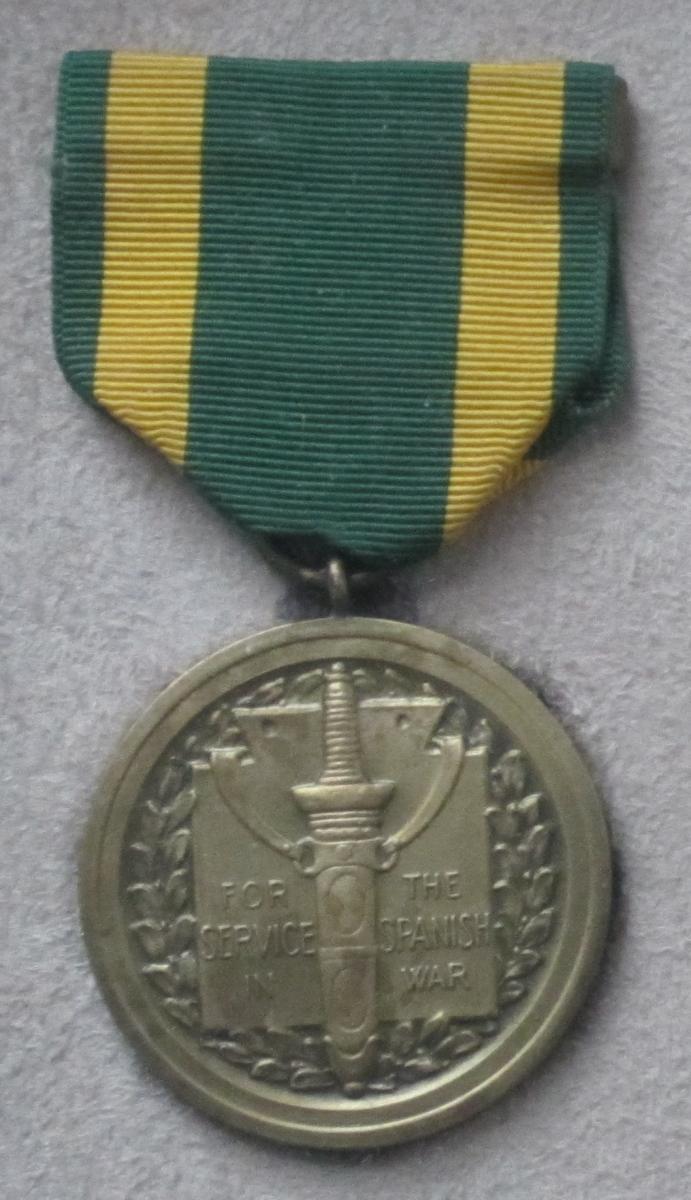
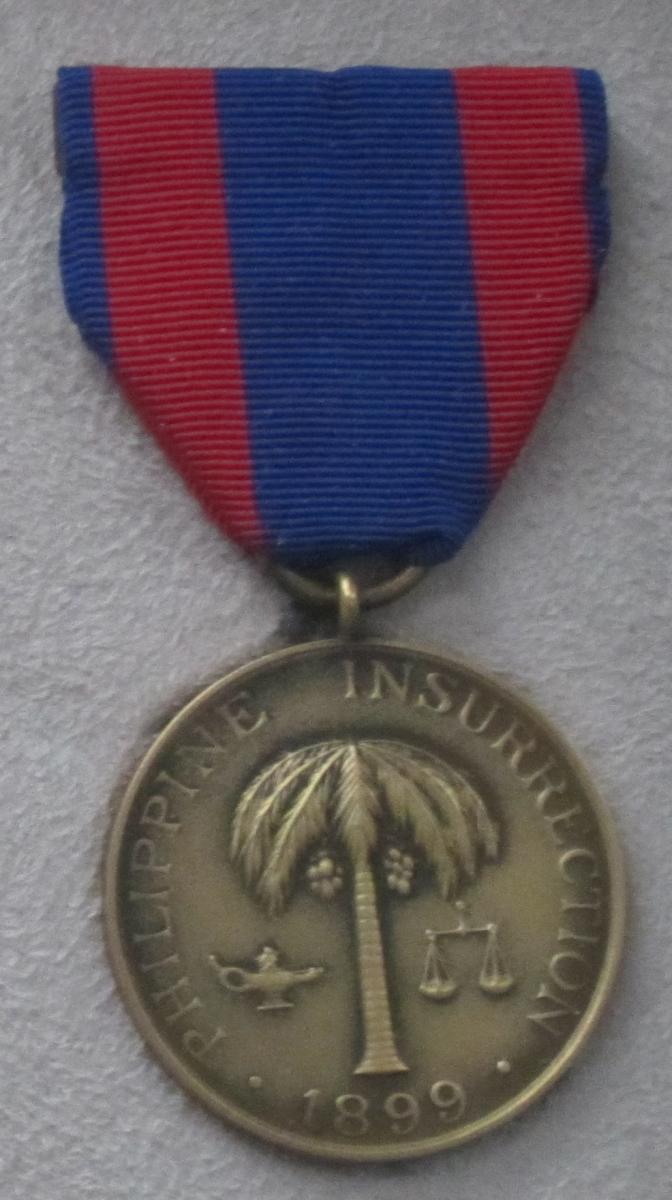
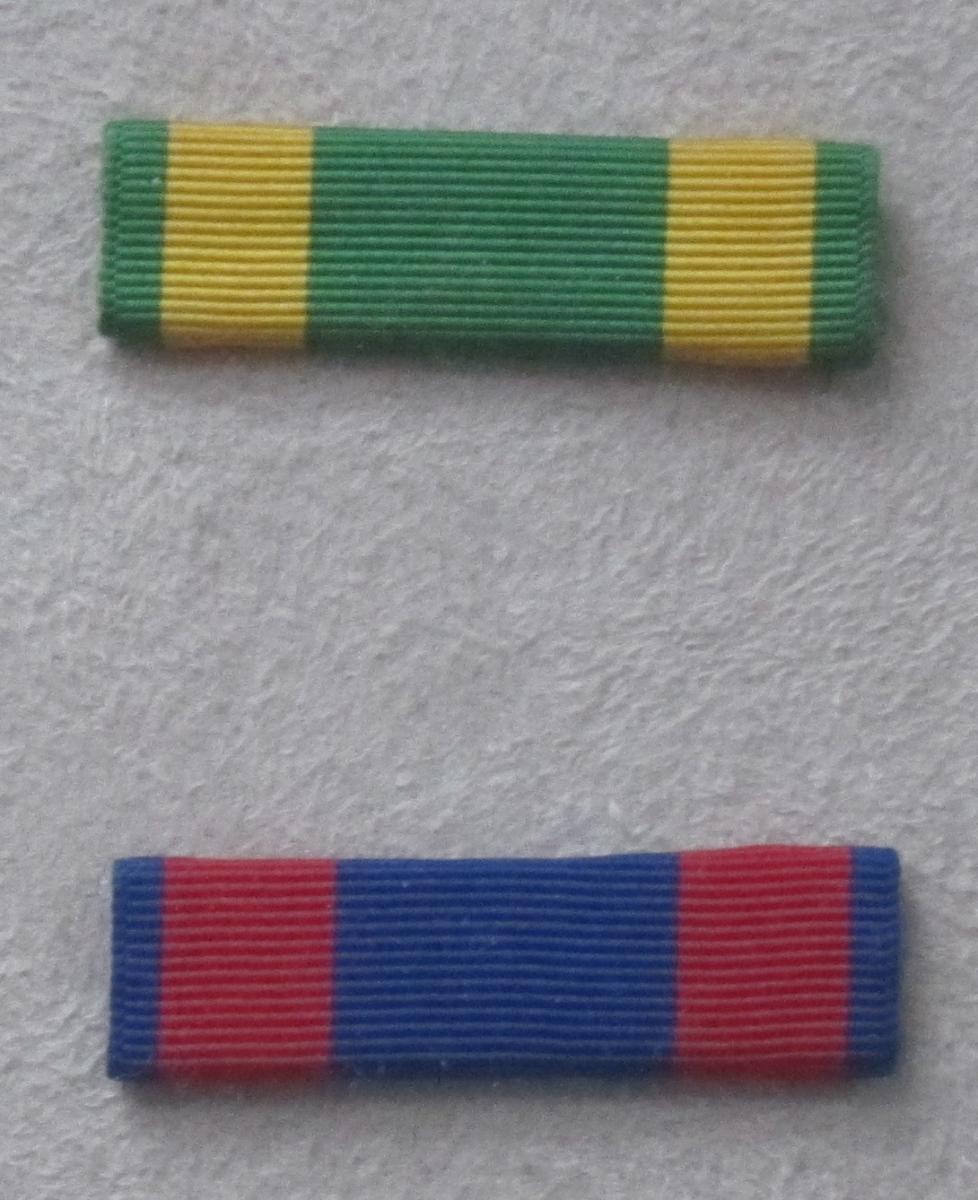
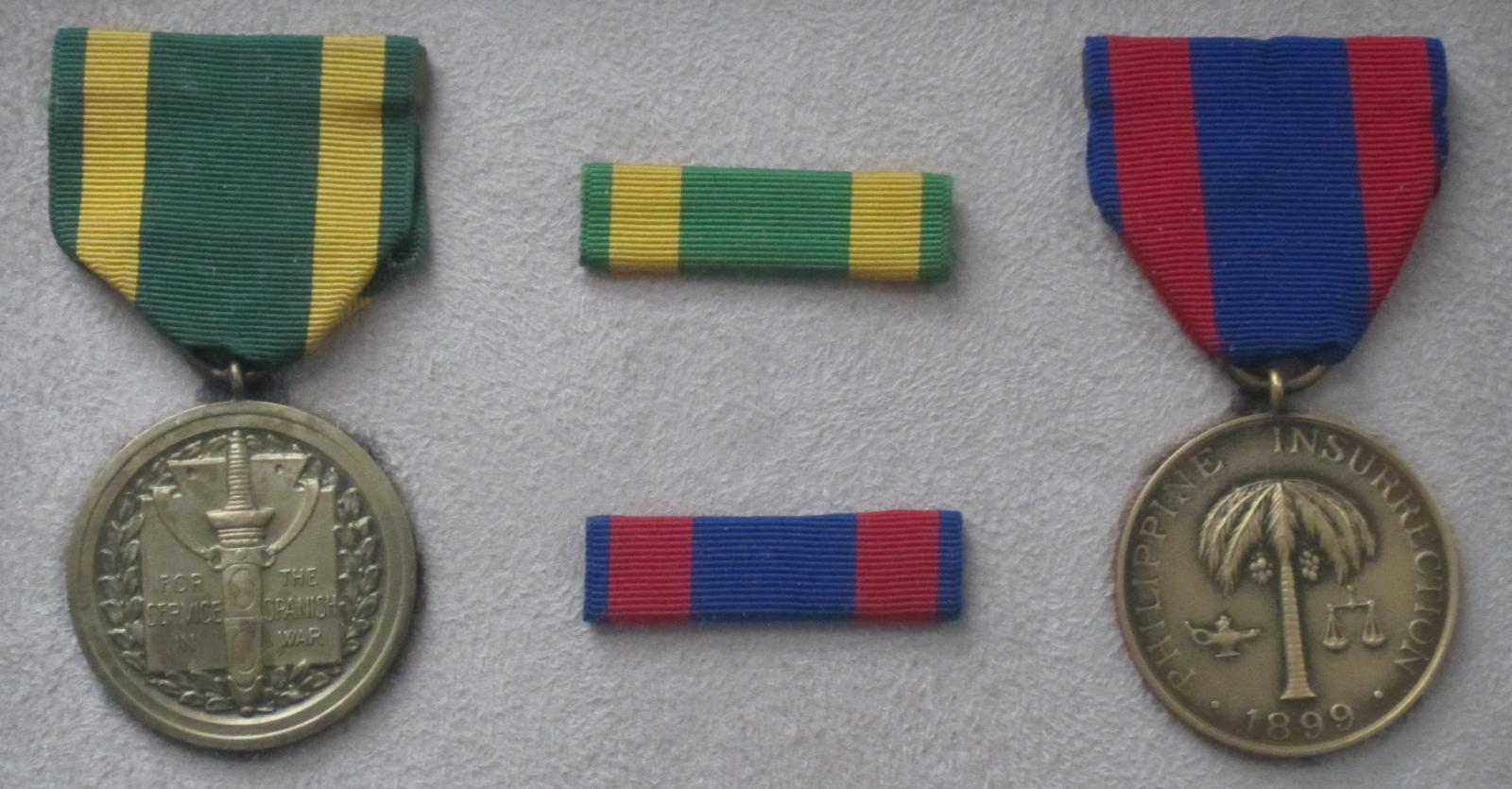 0
0 -
Gregory6, the Abbas Hilmi II commemorative coronation & return from Hegaz medal is a family piece that belonged to my wife's great-grandfather. We currently have no plans to sell this piece. I also do not have any idea of the market value of this medal. The one reference to it on an Ebay site that I could find did not include a price.
0 -
Gentlemen, I am seeking some additional information or research source suggestions about the earliest form of the US Dept of State Special Agent's Badge. The first badge was created in 1917, and I am curious about the final date this badge was used before the design was changed. I also am interested in determining whether it is possible to find listings of Special Agents by their badge numbers. The badge I have is the is the 1917 design and is badge No. 12, but I do not have any of the associated paperwork that originally accompanied this badge. I have had minimal luck with internet searches or initial keyword searching through a couple of University library catalogues. I do not find any examples on auction sites to get a sense of whether this is a common item or its relative value. Any information and research suggestions are greatly appreciated.
0 -
Egyptian Zogist, I saw the judge's image that you posted here on Pinterest, is that where you came across it? I noted it has the incorrect identification as Abbas Hilmi II. I haven't found a way to get further on that yet. My only running idea is to chase down some additional images of George Sherman Batcheller, an American appointed to the District Court 1875-1885; 1897-1902, and an Appeals Court judge 1902-1908. There are apparently a couple painted portraits identified for him, he built an ornate mansion that he didn't get to live in, and had an elaborate Egyptian style-Mausoleaum built for himself in Saratoga Springs, NY- so he seems appropriately vain to sit for a judges portrait rather than a photographic one (such as my wife's great grandfather had done). The one post-Civil War photo I've found of Batcheller as a mature man has rough resemblances, but no clear match to the portrait you posted. Of course, there are many other potential judges with moustaches who could have been the subject of this portrait. I do not have a complete list of non-American or British judges to those courts. I found a portrait of Jasper Yeates Brinton, who was both a District and later Court of Appeals judge, who also wrote several articles about the Mixed Courts and the book: 1930 (1968 revised edition). The Mixed Courts of Egypt. Yale University Press, New Haven. The portrait is by the Egyptian modernist painter Mahmoud Said, who himself was briefly a judge on the international court. The portrait is dated either 1944 or 1945, and is titled either "Portrait de Jasper Brinton" or "Portrait du Président: Jaspar Brinton". As you can see, the modernist style of the portrait provides a poor representation of the judges badge (except that it is gold), but shows the green sash worn by judges of the Court of Appeals.
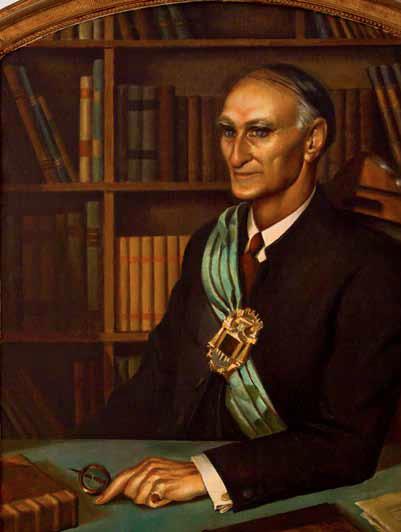 0
0 -
Dear Egyptian Zogist, Many thanks for your translation and additional imagery! I really enjoyed the confirmation of the color scheme for the sash and the badge metal combination on the portrait you found. The Louis-Phillip coat of arms is quite interesting. The Mixed Courts in Egypt were based on adaptations of French law (discussed a bit in the Gabriel M. Wilner article 1975 I cited in a previous post), a partial legacy of the Napoleonic influences. Fluency in French was a requisite skill for judges appointed to the Mixed Courts (my wife's great grandfather was the son of a French immigrant to the New Orleans community of français étrangers). All of this is of tremendous interest to my wife's family. I am spending thanksgiving with the grand daughters of Judge Crabites and they were thrilled at the additional information you and others on GMIC have provided and helped me find as well. This has been fun research.
0 -
As a clarification of the scarf (or sash, which is not really a "scarf" like the the French academic epitoge) colors and badge metal combinations, I did a tiny bit more sleuthing into the oraganization of the Mixed Courts of Egypt to be able to use the information in the Beardsley letter I quoted above. Another reference (Wilner, Gabriel M. 1975. The Mixed Courts of Egypt: a study on the use of natural law and equity. Georgia Journal of Internationa and Comaprative Law vol 5 (no 2): pp. 407-430) stated that the robes of the International Mixed Courts judges were the judicial robes used by appointed international judges in their home countries (ibid. pg 412). Perhaps this was true at the initiation of the Mixed Courts in 1875, but later information contradicts this statement, indicating the use of an Egyptian costume to emphasize the national interest in the Courts' roles and activities. The image of Judges' badges on various auction websites do seem to show variation, although their descriptions make it a bit unclear. The Mixed Courts' Court of Appeals was considered the highest court, and (according to Beardsley's description) its sash was green and the badge is gold. For the District Courts (i.e., Alexandria, Cairo, etc), the sash color appears to have been red, and the badge was gold and silver (as shown in the image I included on the first post in this string). The purely silver badges of the Parquet that Beardsley mentions refers to was a group of Magistrature debout, who worked under the Procureur General to prosecute case on behalf of the state and to be a guardian of the public order, primarily supervision over litigation of cases of public interest (especially those affecting minors or recovery of dowries by wives).
0 -
Gentlemen, I may have found a translation of the inscription of this badge, but would appreciate any confirmation from scholars using this site. I have located a statement about the Khedive Judges' badge inscription and a description of the judical robes for the International Mixed Courts (matching the black & white image of my wife's great grandfather in my previous post). This description includes variants on the sash colors and badge metals for different roles in the Mixed Courts. The information was described by Richard Beardsley, the Consul General for the US in Cairo from 1870 -1876, in a letter date July 15, 1875 to Hamilton Fish, the US Secretary of State from 1869-1877: " The judicial dress adopted for the judges is very simple. It consists of a plain suit of black cloth, the coat single-breasted, buttoning up to the neck, with a narrow standing collar. Over the shoulder and around the body is worn a broad scarf, to which is attached a large and very handsome badge of office. The badge consists of a shield resting upon a drapery, bearing various appropriate devices, from beneath which radiate the rays of a many-pointed star. On the shield is engraved in Arabic " Law is the foundation of justice." The red fez cap, the national head-dress, is worn on the head. The scarf worn by the judges of appeal is green and the badge of pure gold; of first instance, the scarf is red and the badge of gold and silver combined; and of the bar or parquet the scarf is red and white, and the badge of silver." I hope this information may also be of interest to other individuals on GMIC.
(source = EXECUTIVE DOCUMENTS PRINTED BY ORDER OF THE HOUSE OF REPRESENTATIVES. 1875-'76. WASHINGTON: GOVERNMENT PRINTING OFFICE. 1876; PAPERS RELATED TO FOREIGN RELATIONS The United States, TRANSMITTED TO CONGRESS, WITH THE ANNUAL MESSAGE OF THE PRESIDENT, DECEMBER 6, 1875. PRECEDED BY A LIST OF PAPERS AND FOLLOWED BY AN INDEX OF PERSONS AND SUBJECTS. VOLUME II. WASHINGTON: GOVERNMENT PRINTING OFFICE. 1875. pp. 1347-1348)
0 -
Gentlemen, I have a question regarding the Khedivate Judges Badge in Egypt. My wife's great grandfather was appointed to the international court (the Mixed Courts) in Egypt and served between 1911-1936. Unfortunately the family does have this badge, the illustration I am providing comes from a different source. There was a discussion in May, 2011 on GMIC regarding an example a member had obtained (link quoted here). I am curious whether someone would be kind enough to translate the enamelled inscription on this badge? I am including a photograph of my wife's great grandfather (Pierre Crabites) in his judicial robes wearing this badge.
0 -
Gentlemen, I am a new member and recently had a terrific interaction with contributors to this website helping me identify a medal belonging to my wife's great-grandfather who was on the Mixed Courts in Egypt from 1911-1936. I posted that topic in the Africa seciton as that was the first place I found some information about Egyptian Khedive medals during my internet searches. I am posting this question about that medal here in hopes of getting some additional information. I apologize for the redundancy in this posting with that other string. My wife's great grandfather, Pierre Crabites, was appointed by president Taft to the Mixed Courts in Egypt between 1911-1936. He made a brief second visit to Egypt for the OAS in 1942 before dying in Baghdad in 1943. Judge Crabites was the presiding judge on the Mixed Courts for the case for sequestration rights to the Tomb of Tutankhamun in 1924. We have an image of him in his judicial robes wearing the Judicial Badge, although that badge is not with the family at this point. He was on very friendly terms with Kings Fuad I and Farouk and was a frequent visitor to the palace and its library. He found in favor of Egypt keeping the Tutankhamun artifacts in country and not allowing them to be taken to Britain. Judge Crabites was awarded the Order of Ismail (Grand Officer class) and another medal that contributors here (in the Africa section) have helped me identify as the Khedive Abbas Hilmi II coronation anniversary and return from Hegaz medal. I found a couple images that are copyrighted by Hassan Kamel Kelisi-Morali through Flickr and then on Picssr (http://picssr.com/photos/kelisli/interesting/page42?nsid=7892156@N08 pages 42-43 (both images are identified as the reverse sides, although it is most likely the portrait side is the obverse). Since this is a commemorative medal and not a military service award, nor one of the other service to the state awards (i.e. Medals for Meritorious Service; Devotion to Duty; Benevolence; etc.), how would such medals likely have been obtained? Would this have been a gift from someone in the royal family whom Judge Crabites was friendly with, other officials, were they availalbe for purchase? I also would like confirmation, if someone here knows, that the Order of Ismail at the Grand Officer class was limited to 75 living individuals, is that correct?
0 -
I have an additional question about the Khedive Abbas Hilmi II coronation anniversary and return from Hegaz medal. Since the commemorative medal I have asked about is not a military service award, nor one of the other service to the state awards, how would such medals be obtained? Would this have been a gift from someone in the royal family whom Judge Crabites was friendly with, other officials, were they availalbe for purchase? I have found confirmation that he was awarded the Order of Ismail at the Grand Officer class (limited to 75 individuals, living I assume?).
0 -
Wow, I really appreciate the work you have done on this medal. While I can stumble through some ancient Egyptian, I do not read any Arabic, so this is a huge help to me. I have used Royal Ark for some of my research, and it was a location where I was first able to identify some initial information about the Order of Ismail that Crabites was awarded.
0 -
Dear Egyptian Zogist, you have been of great help in my quest about this medal and additional family history. Many thanks for the additional information on the location of Hejaz as the area of Al-Medina and Mecca, your identification of the mosque in Cairo, the lithograph, and translation of the inscription on this medal. I do have a copy of Pierre & Charlotte Crabites' bookplate (and the translation) which was drawn by Mary Reisner, daughter of the Egyptlogist Dr. George Reisner.
The information on the die description you found is also quite intersting. Does the identified the anniversary year of 1907 in that description square with what you can read?
0 -
Chris-Zowie-you were 100% correct and have allowed me to identify this medal!! Yay-hurray! Indeed, the portrait is Khedive Abbas Hilmi II, and it is a medal commemorating his coronation and return from Hegaz. I found a couple images that are copyrighted by Hassan Kamel Kelisi-Morali through Flickr and them on Picssr (http://picssr.com/photos/kelisli/interesting/page42?nsid=7892156@N08 pages 42-43. Both images are identified as the reverse sides. The side I cannot see has a central image of a mosque, an inscription at the bottom, a stylized ancient Egyptian Horus in the 12:00 position, and the other border elements are identical to those on the side I have illustrated (that probably is the front since it has Abbas II portrait). Now what I need to track down is the date of issue and I do not yet know the location or significance of Hegaz. Thank you so much for your help! I was awake last night several times excited because the image you sent and my first checks on Abbas II were spot on with the medal portrait. There were a few old Ebay images that turned up as image thumbnails during my searches-but I could not find the original entries anywhere until I hit on flickr then linked to picssr. I'm not posting the reverse as it is copyrighted. Most gratefully yours-Rusty
0 -
Dear Chris,
Thanks for your input. I understand the question about the likeness. Certainly it could be King Fuad, Khedive Abbas II, or some other royal as you suggest rather than Farouk. I still have not come across any descriptive or photographic material that can help me identify the nature of this medal. As I noted, Judge Crabites was in Egypt 1911-36, and briefly in 1942 before the British maneuvered to have him shifted to the backwater location of Baghdad because of his royalist sympathies in Egypt. Crabites died in Baghdad in 1943. The family has the collar star and badge for the Order of Ismail mounted with this same unidentified medal.
0 -
Thanks Paul, the medal is not currently available for me to take out of its display. The opportunity may come, but unfortunately not at this point.
0 -
Gentlemen, I am looking for some help in identifying an Egyptian medal awarded to my wife's great grandfather in the early 20th century. He was appointed by president Taft to the Mixed Courts in Egypt between 1911-1936. He made a brief second visit to Egypt for the OAS in 1942. Judge Pierre Crabites was the presiding judge on the Mixed courts for the case for sequestration rights to the Tomb of Tutankhamun in 1924. We have an image of him in his judicial robes wearing the Judicial Badge, although that badge is not with the family at this point. He was on very friendly terms with King Farouk and was a frequent visitor to the palace and its library. He found in favor of Egypt keeping the Tutankhamun artifacts in country and not allowing them to be taken to Britain. Judge Crabites was awarded the Order of Ismail (probably Grand Officer class) and another medal I cannot yet identify. I have attached 2 images of this medal (I apologize for the poor quality of the images through the glass of the mounting). The medal in question is not a military award, and is likely related to his judgement that kept the Tutankhamun artifacts in Egypt. The medal is round with the Khedive crown on top, it is gold or gold plated. The central portrait is a 3/4 view of a moustached man in a military style uniform and fez that is probably King Farouk. There is no writing on the visible side of the medal (it is in a frame and I cannot open it yet to see the reverse side). Around the margin are several images of Egytian antiquities separated from each other and the central portrait by scrolling. In the 12:00, 4:00, and 8:00 positions are stylized forms of ancient Egyptian scarabs flanked by lotus blossoms. On the upper right third is an image of the sphinx. On the upper left third is a view of the pyramids. At the bottom is a scene that probably represents archaeological ruins. I have not yet had any luck in my research to identify this medal and would appreciate any help determining what it may have been awarded for or suggestions about references I could consult further. Thank you for your attention to my inquiry.
0




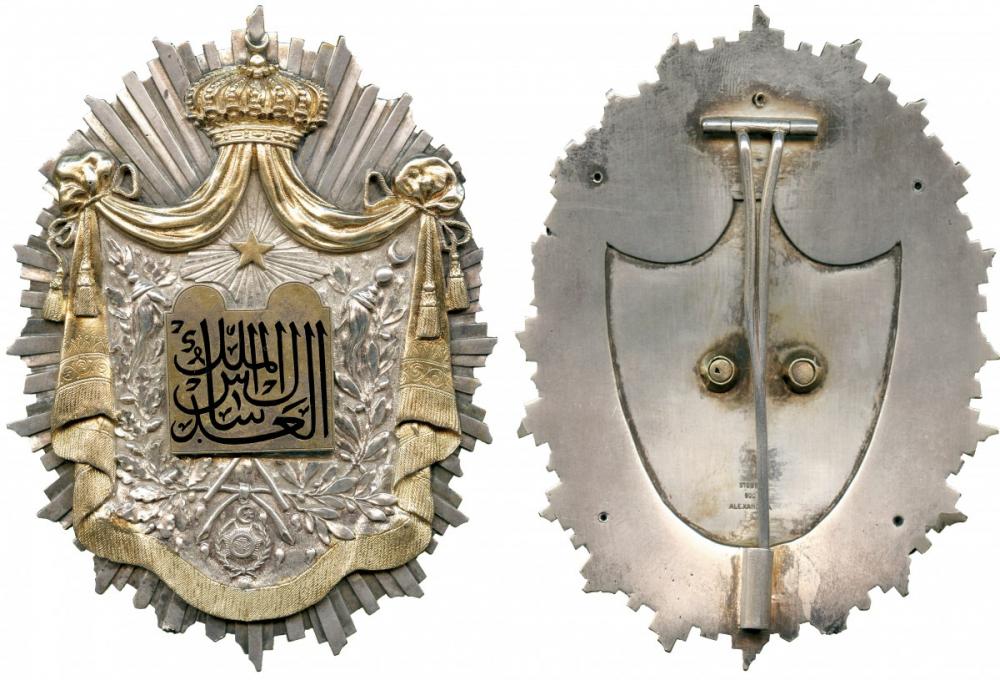
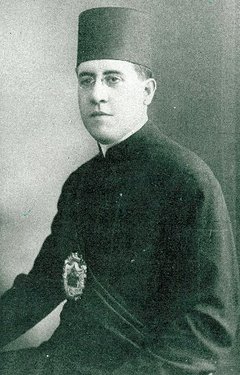



Egypt Khedivate Judge's Badge question
in Middle East & Arab States
Posted
I would like to update my last posting with a few illustrations of the different badges and sashes that I have previously mentioned. I apologize for some redundancies with the above posts. For all these judgeships, at least in the early 20th century, the costume was a simple black tunic and a maroon fez. Each of the three different courts had a different colored silk sashes and badges made from different precious metals. The tablet legends on all badges are enamel. As noted, prior to the instigation of this system, judges wore the robes of their home countries and particular courts they had served.
The Mixed Courts of Egypt were established in 1876 and were used until 1949. In place of the exclusive consular jurisdiction to which foreigners were formerly liable, a system of Mixed Tribunals was established in 1876. At least part of this was due to the increased presence of foreigners in Egypt associated with the cotton trade, following the decline of the US production during the Civil War, and probably construction of the Suez Canal. The judges for the Mixed Courts were Egyptians and foreigners from Europe and the United States (the latter generally appointed by the Khedive from qualified officials nominated by the European power and the US government). The Mixed Courts were based on the French civil code (Napoleonic Code), British common law, with additional elements from Islamic law.
For all these judgeships (in the Appeals Court, the District Courts, and the Parquet-the public prosecutor’s office), at least in the early 20th century until the end of the Mixed Courts, the costume was a simple black tunic with a standing collar, and a maroon fez. Initially, following the establishment of the Courts and probably throughout the
19th century, judges of the International Mixed Courts wore their own judicial robes used by each appointed international judge from their home countries. The costume change was apparently intentionally nationalistic, changing to a tunic and fez indicating the use of an Egyptian costume to emphasize the national interest in the Courts' roles and activities. Is there a proper term for this tunic? Each of the three different courts had a different colored silk sashes and badges made from different precious metals. The badge designs were all the same except for their materials. The tablet legends on all badges are enamel.
The international Court of Appeals was the highest of the Mixed Courts (in Alexandria). The sash for this court was green and the judges’ badge was of gilt in gold (see badge illustration below and the previously posted portrait above on 12/1/2016 of Judge Jasper Brinton painted by the 20th century modernist painter Mahmoud Said, who was a judge on the Mixed Courts 1922-47, and his father was the Prime Minister of Egypt 1910-14 and May-November 1919). An additional small black & white image of a Greek member of the Appeals Court, Nicolas Cambas, wearing the tunic, sash and badge is published in Jasper Brintons book on teh Mixed Courts, cited above on 12/1/2016. For the District Courts (Alexandria, Cairo, and Mansourah-the latter held a session once a year in Port Said) the sash was red and the badge was gold and silver gilt ( see illustrated below-same as in my original post of 11/17/2016; and see the the color portrait posted by Egyptian Zogist on 11/23/2016; and the black & white photograph of Judge Pierre Crabitès in my original post of 11/17/2016). The sash for the Parquet (office of the Procureur-General who prosecuted cases in front of the Mixed Courts) was red and green and the badge is silver. The one illustration I have found so far of a parquet official was for Apostolo N. Gennaropoulo (of Greece) who served in Alexandria. The image shows the sash as having a green stripe as the upper margin of the sash that is ~1/3 the width of the red stripe below. Photos of him and his badge are shown below. These silver gilt badges appear to be the most common ones appearing on auction websites.
The badges are large and heavy, ~ Width: 88 mm x Height: 117 mm; 161-172 gm. Abbas Hilmi II had the badge designed by Emile Froment-Meurice of Paris, the most famous jeweler in Paris at the time. Genuine examples were variously made for the courts by Froment-Meurice and several Egyptian manufacturers such as Lattes of Cairo, Bichay of Cairo, M. Laurencin & Cie. of Alexandria, and Stobbe in Alexandria. Some original badges were unmarked. The design of these badges remained unchanged throughout the entire period of their use. As noted by Egyptian Zogist in his post of 11/23/2016, apects of the obverse design derive from French iconography and Ottoman images (as the Khedivie represented an Ottoman viceroyalty ruling Egypt until Abbas Hilmi II was deposed and the remaining kings from this dynasty ruled under a British protectorate). Part of the badge design clearly derives from French iconography (see below), a borrowing from the influence of the Napoleonic code on Egyptian law. The drapery is considered a “pavillion”, the hand on the upper left is the “hand of justice”. The image of a scepter in the upper right may be derived from earlier versions depicting two knights representing two orders- Order of Saint-Michel and the Ordre du Saint-Esprit- were together known as the ordres du Roi with spears with standards held projecting above the pavilion. In the Mixed Courts judge’s badge, the hand of justice remains, and the other side is a whisk representing royal authority (like a scepter). I have been told that the small circular 'medallion' at the bottom of the badge bears the Ottoman Tughra and resembles the Order of Medjidie, its placement also appears to be related to the cross seen in the French royal arms (see below and image above from post by Egyptian Zogist on 11/23/2016).
I have seen and gotten several translations of the legend. That from Egyptian Zogist on 11/23/2016 is the most precise: "Justice is the foundation of kingship/governance". His additional comments above on the continued use of this motto in Egypt are relevant.
Silver gilt judges’ badge, identified as that of Herbert Hills of the Mixed Courts in Cairo. The silver of this badge indicates it was worn by a member of the Parquet, or the state prosecutor’s office, although Hills was a judge on the District Courts 1875-82 and on the Court of Appeals 1882-1904. Perhaps at this earlier period when the regalia changed from the previous use to the standardized Egyptian garb, the badge distinctions had not yet been fully established. It may also be that this is not Hillses badge, the named attribution appears to be based on a handwritten piece of paper attached to the reverse side of the badge. (Dreweatts Bloomsbury Auctions; lot 175; http://www.dreweatts.com/cms/pages/lot/13863/175)
Arms of the first Empire (1804-14) showing elements included in the design of the Mixed Courts judges' badges
Arms of the monarchy of July (1830) showing elements included in the design of the Mixed Courts judges' badges.
Gold gilt Judges’ Badge of the Mixed Court of Appeals, obverse view of badge with legend reading: "Justice is the foundation of kingship/governance".
Gold gilt Judges’ Badge of the Mixed Court of Appeals, reverse view of badge. Maker's maker's is unclear, possibl' Froment Meurice of Paris, although the first two visible letters appear to be "MO...".
Silver and gold gilt Judges’ Badge of the Mixed Court of Appeals, obverse and reverse view of badge. This example was made by Stobbe of Alexandria.
Silver gilt judges' and/or official's badge of the Parquet, or Procureur-General who prosecuted cases in front of the Mixed Courts, obverse view.
ilver gilt judges' and/or official's badge of the Parquet, or Procureur-General who prosecuted cases in front of the Mixed Courts, reverse view. This example has no maker's mark, but is probably genuine.
Badge in case that that belonged to Apostolo N. Gennaropoulo (of Greece) of the Parquet attached to the Mixed Courts of Alexandria, Egypt and a photo of him in his official robes wearing the badge on his bi-colored sash of green over red. (http://www.ebay.co.uk/itm/OTTOMAN-EMPIRE-EGYPT-KHEDIVATE-JUDGE-039-S-BADGE-OF-OFFICE-FROMENT-MEURICE-W-BOX-/181500482691?_)